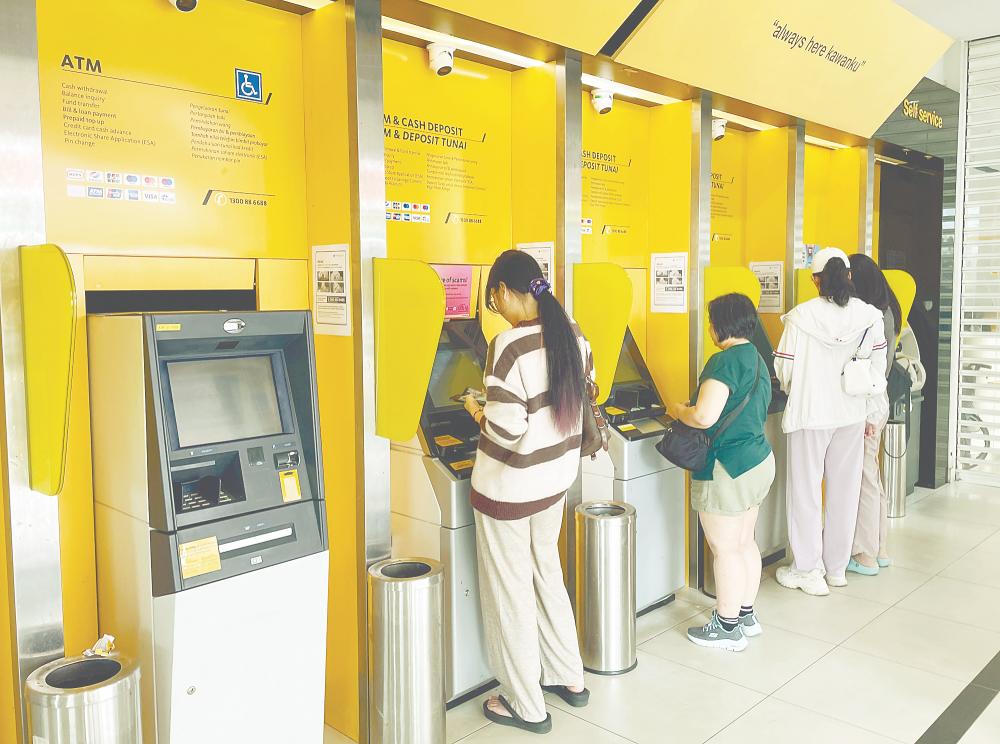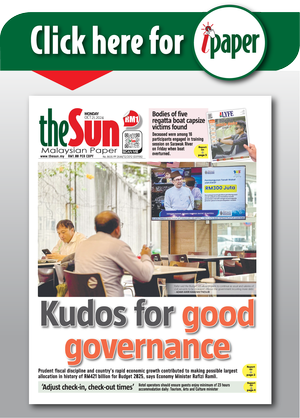PETALING JAYA: The debate over the RM1 interbank ATM withdrawal fee has resurfaced, with Pasir Mas MP Ahmad Fadhli Shaari calling for its immediate abolition on grounds that it places an unnecessary financial burden on Malaysians, particularly low-income earners.
Ahmad Fadhli said the fee, imposed on every interbank ATM withdrawal, has led to substantial profits for the banking industry at consumers’ expense.
“Imagine, the RM1 fee is being charged on every interbank ATM withdrawal. So, how much profit is being accumulated by the banking system in a single day as a result of such a ‘capitalist system’?
“We will push the government to abolish this fee to prevent further exploitation of Malaysians.”
In an exclusive report by theSun in December last year, the Federation of Malaysian Consumers Associations (Fomca) called on banks to absorb the RM1 charge for each interbank withdrawal instead of forcing customers to pay, especially since the banks are making huge profits.
Financial reports for 2023 showed that among Malaysia’s top four banks by asset size, Maybank’s net profits grew by 17.5% to RM9.35 billion, CIMB’s rose by 28.3% to RM6.98 billion, Public Bank’s increased by 9% to RM6.6 billion and RHB Bank’s expanded by 4.8% to RM2.81 billion.
According to Bank Negara Malaysia’s (BNM) 2024 Payment Statistics: Payment Channels, Malaysians use ATMs twice a month on average.
Assuming that all transactions involve interbank cash withdrawals, each individual would be charged RM24 per year just because their bank’s ATM is not available near them.
This does not take into account customers who access multiple banks.
“A common concern is that the fee disproportionately affects
low-income earners and rural folk, who rely on cash transactions and need to withdraw small amounts of money frequently,” Fomca CEO Saravanan Thambirajah had said.
“When their bank’s ATM is not available, they are forced to use the ATMs of other banks, incurring the RM1 fee each time.
“There needs to be greater regulatory oversight, with BNM playing a central role in ensuring fee structures are fair.”
Economic analyst Dr Aimi Zulhazmi Abdul Rashid said while there are costs involved in the information technology and security infrastructure that is needed for daily account reconciliation between banks and BNM, such expenses should not be passed
onto consumers.
“To meet the goals of the government’s economic plan for high-income status by 2027, policies must address the needs of all segments of society.
“The public deserves to know what the actual cost of a transaction is as it concerns their cost of living.”
Ahmad Fadhli claimed Payments Network Malaysia Sdn Bhd, the entity responsible for imposing the fee, has recorded RM544 million in revenue and RM271 million in net profit in 2023, primarily from the RM1 charge.
He said since its introduction, the fee has contributed to an accumulated profit of RM1.43 billion.
“Calls to abolish the fee echoes the sentiments of many Malaysians, particularly those in the B40 and M40 groups, which form the vast majority of Malaysians.
“This seemingly small charge represents a significant burden on those least able to afford it, while simultaneously generating substantial profits for the banking system.
“It’s a system that appears to disproportionately benefit the wealthy at the expense of the struggling masses,” he said.
In April 2020, the government waived the RM1 withdrawal fee at all Malaysian Electronic Payment System Sdn Bhd machines during the Covid-19 pandemic, but it was reinstated in February 2022.
“The government’s previous decision to waive the fee in 2020 demonstrates an understanding of the financial pressures faced by Malaysians. The subsequent reinstatement of the fee in 2022 feels like a step backwards, a move that prioritises profit over the well-being of the people.
“It’s time for a change,” Ahmad Fadhli said.









